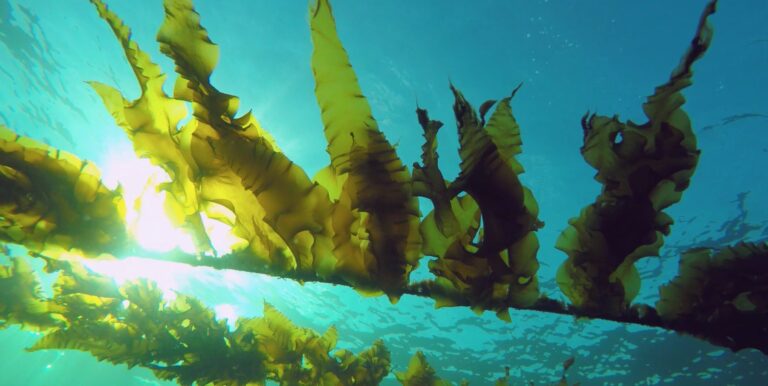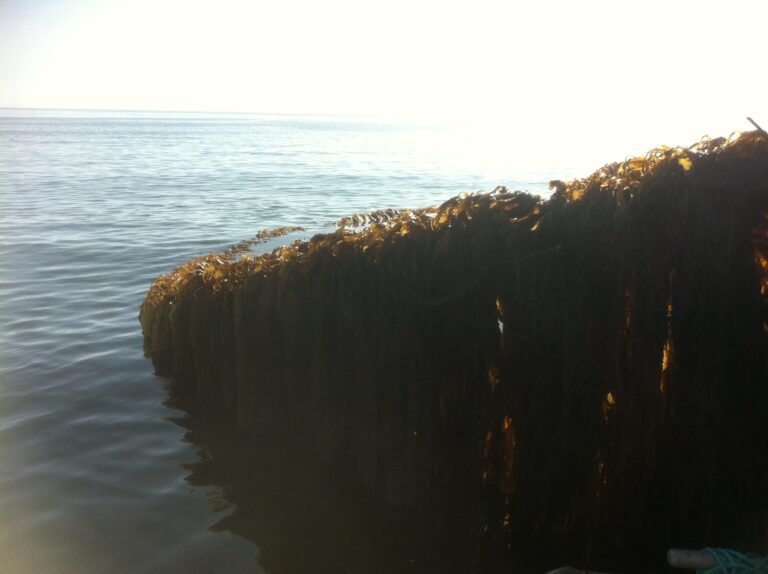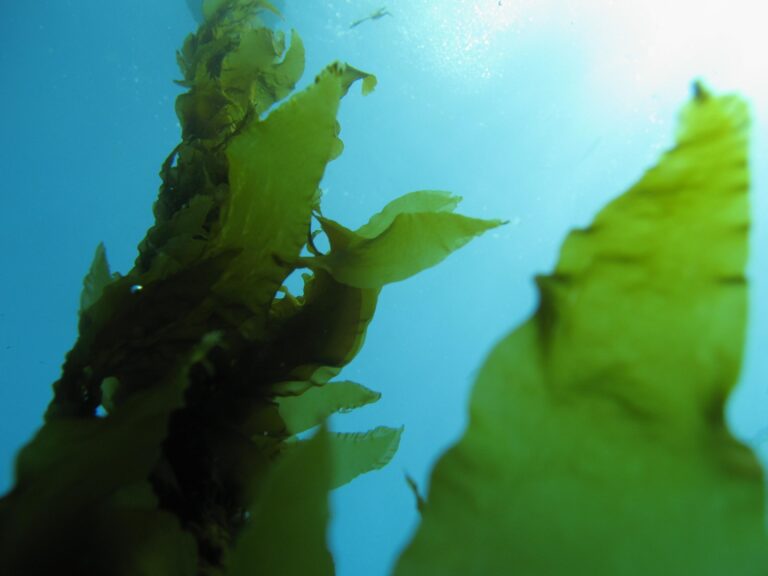Environmental Benefits

Many positive impacts for the environment, society and global economy
Seaweed cultivation, if it is adopted with the right strategy and especially at large scale, can be part of the solution to help mitigate biodiversity loss, excess nitrogen (eutrophication), ocean acidification, climate change and land use conflicts. Cultivation methods can also be applied to ecosystem restoration, easing pressure on fragile kelp forests. Farmed seaweed can replace energy-demanding land-based biomass and products of fossil-fuel origin. It can also help reduce plastic pollution in the ocean through the adoption of seaweed bioplastics and other biomaterials.
We consider the following areas major environmental benefits of seaweed cultivation:

Carbon capture and storage
Seaweeds capture and store carbon dioxide in their plant tissue and researchers are now investigating the extent to which this captured carbon may become sequestered - meaning effectively stored, or locked away - in the deep sea when the biomass sinks, or in the pool of dissolved organic matter. One ton of seaweed can capture an estimated 120 kg of CO2, a contribution which until now has received little attention in the context of Blue Carbon. Seaweed farming can have a neutral or positive impact towards climate change and ocean acidification, depending on the use of the biomass and particularly when farmed in large-scale.

Bioremediation and water quality
Starting cultivation in a new location brings a net positive contribution in carbon and nutrient cycling in the sea. Seaweeds can filter excess inorganic nutrients from runoffs or fish aquaculture, which together with the added oxygen, help to improve water quality locally. With the right strategy and location of the farm, seaweeds can help alleviate eutrophication and hypoxia, whilst increasing local biodiversity. One ton of seaweed can take up about 2 kg nitrogen and 0.2 kg phosphorus.

Biodiversity and fish
Farmed seaweeds act as a temporary forest, providing food and shelter for small aquatic animals and fish. One study found 73% more species (19 species) in our seaweed farm compared to the surrounding sea. Studies have found that marine life is quickly reestablished when a new seaweed crop is planted after harvesting. The seaweed habitat can increase local fish stocks by providing shelter to commercially important species, which can be fished in the vicinity of farms. The amount of fish biomass supported by a farm is under analysis, but researchers have found that natural seaweed beds support an estimated 10 kg of fish per 1 ton of kelp.

Responsible production
We carry out responsible production in all the phases of our farming process. Our products are traceable from hatchery to sea and packaging, undergo strict quality controls and are certified organic. Seaweeds are nutritious and an environmentally friendly source of biomass for food, health products and animal feed. They help reduce the environmental footprint of other industries and stimulate collaboration for better use of resources and more sustainable products.

Monetary credits for seaweed would provide farmers of all sizes with crucial capital for continuing or scaling their operations. Seaweed or “blue carbon” is long overdue to be included in countries' carbon inventories and used in carbon offsetting mechanisms. Nutrient credits are already under consideration in some countries. Seaweed’s positive effect on wild fish stocks could also be compensated (current global spending on fish subsidies is 30 Billion USD/year).